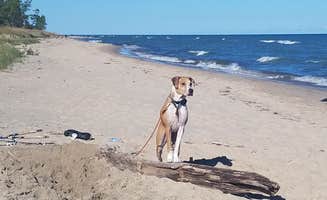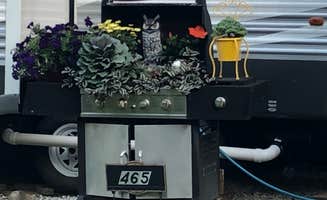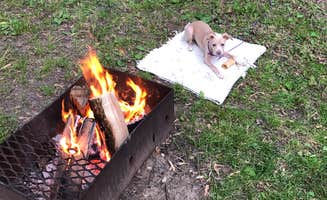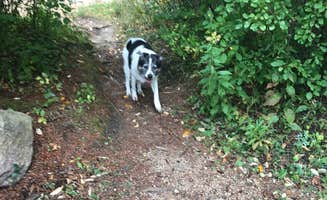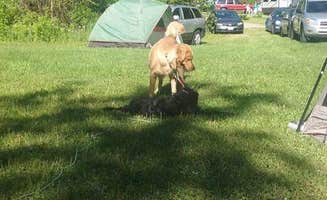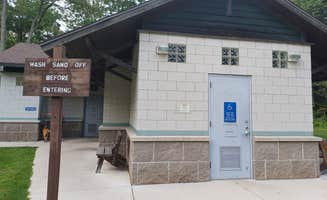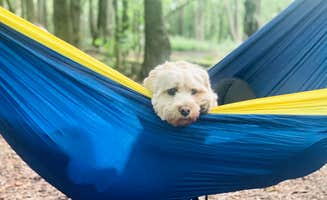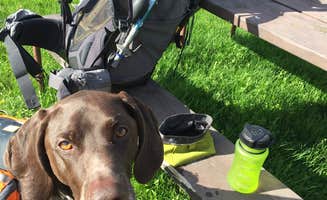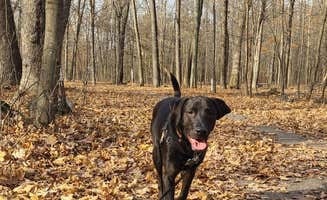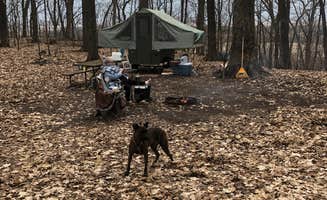Sheboygan County camping areas sit within Wisconsin's glaciated eastern region, with elevations ranging from 580 to 850 feet above sea level. The terrain features kettle depressions, eskers, and glacial till deposits that shape the camping landscape. Winter camping remains viable at several locations where temperatures typically range from 10-30°F between December and February, requiring specialized cold-weather equipment.
What to do
Hiking through dunes: The cordwalk trail at Kohler-Andrae State Park offers a distinctive terrain experience. "Hiking trails are great, especially the ones through the dunes. Definitely worth the stay!" notes Elliot Q. The trails connect to various ecosystems within the park's boundaries.
Beach activities: Lake Winnebago shoreline provides swimming and boating alternatives to Lake Michigan. "Beautiful state park right on Lake Winnebago. Sunrises so, so beautiful," writes Kathie M. about High Cliff State Park Campground. The park maintains designated swimming areas with restroom facilities nearby.
Wildlife observation: Early morning hours offer optimal wildlife viewing opportunities at multiple conservation areas. "Numerous wildlife sightings including deer and sandhill cranes add to the experience," reports a visitor to Broughton Sheboygan Marsh Park. The 14,000-acre marsh ecosystem hosts over 100 bird species throughout the year.
What campers like
Clean facilities: Many campers note the consistently maintained bathrooms and showers. "Bathhouse very nice. Very nice nature center. Laundry facilities available," reports Kathie M. at Kohler-Andrae State Park. The bathhouses feature individual shower stalls with hot water available year-round at most locations.
Spacious sites: Campsite size varies between parks, with some offering exceptional room. "The sites are nice size, and there are many with shade, a few with mostly sun, and a lot with a mix," notes Jimmy P. about Long Lake Campground. Site configurations accommodate various camping styles from tent platforms to pull-through spaces.
Waterfront access: Proximity to water features heavily in positive reviews. "Short walk to Lake Michigan and a nice beach. Only flaw is the inconsistency with fire pits," reports Justin F. The lakefront sites at most campgrounds require reservations 3-4 months in advance during summer season.
What you should know
Reservation requirements: Most campgrounds require advance booking, especially for summer weekends. "If you plan to camp for a weekend, you must make a reservation way in advance," advises Shanon P. about Harrington Beach State Park Campground. Booking windows open 11 months ahead for state parks.
Site privacy variations: Tree density determines privacy levels between campgrounds and site numbers. "Sites are quite private. Near beach. Nice size," states Benjamin C. Some sites have vegetation buffers while others feature more open layouts with less separation between neighboring campers.
Water levels fluctuate: Lake Michigan shorelines change seasonally, affecting beach access. "When we went to the lake level was up so high due to flooding that we weren't really able to enjoy the beach," reports J.K. Beach conditions vary throughout the season, with spring typically seeing higher water levels.
Tips for camping with families
Activity planning: Multiple developed playgrounds serve different age ranges. "There is a large open area and play area for kids to run around walkable from the camping, lots of little paths to explore!" reports Kendra G. at Kohler-Andrae State Park. Most playgrounds include modern equipment with safety surfacing.
Beach selection: Families should consider water depth and facilities when choosing swimming areas. "The lake is rather shallow so best for swimming in early summer or warm fall days," advises Chris A. about Long Lake Campground. Many swimming areas feature gradual entry points suitable for younger children.
Campsite location strategy: Sites closer to restrooms benefit families with young children. "We've stayed at 209 and 227 here... Both are nice and close to pit toilets and a short walk to modern bathroom facilities," notes Erin about Kohler-Andrae State Park. Corner sites typically offer more play space and buffer zones.
Tips from RVers
Water hookup planning: Not all campgrounds offer full hookups at every site. "One spigot for every four sites for water so 100 foot hose is required," explains Jill G. about Broughton Sheboygan Marsh Park Campground. Many sites require extension hoses beyond the standard 25-foot length.
Electric service limitations: Amperage varies between campgrounds, with some offering only basic service. "Big sites, plenty of trees for hammocks. Free showers!" reports Jamie R. about High Cliff State Park Campground. Most electric sites provide 30-amp service, while 50-amp connections remain limited throughout the region.
Site accessibility: Road quality affects larger RV access at some locations. "The park is large and the activities are spread about," notes Sarah G. Interior roads at most campgrounds accommodate RVs up to 40 feet, though specific site dimensions vary significantly.


